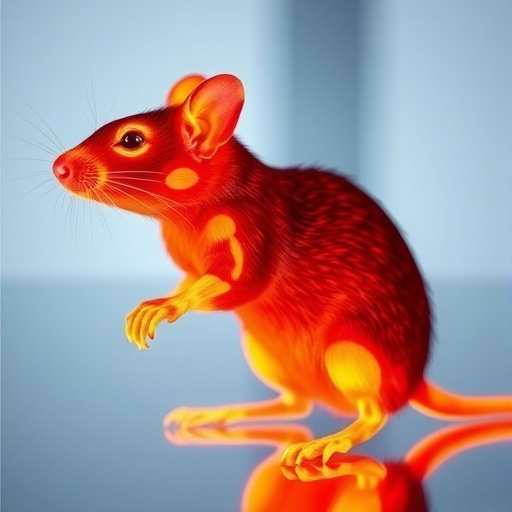In a groundbreaking study published in BMC Complementary Medicine and Therapies, researchers have unveiled the potential therapeutic benefits of cinnamic acid in treating Achilles tendinopathy, a common ailment affecting athletes and active individuals. This crucial research, performed on a rat model, opens new avenues for understanding how naturally occurring compounds can alleviate pain and improve healing in tendon injuries. The findings highlight the importance of exploring alternative treatments as adjuncts to traditional therapeutic approaches.
Achilles tendinopathy is characterized by degeneration and inflammation of the Achilles tendon, often leading to chronic pain and functional impairment. Traditional treatments primarily include rest, physical therapy, and, in some cases, surgical intervention. However, the effectiveness of these methods can vary significantly among individuals. This variability underscores the urgent need for novel therapies that can enhance recovery rates and improve quality of life for those impacted by this condition.
Cinnamic acid, a compound derived from the bark of cinnamon trees, is renowned for its anti-inflammatory and antioxidant properties. This unique compound has been explored in various contexts, ranging from cardiovascular health to metabolic disorders. The current study presents a compelling case for its application in the realm of musculoskeletal health, specifically targeting tendon repair and rehabilitation.
The research team led by Capkin et al. utilized a rat model of collagenase-induced Achilles tendinopathy to assess the efficacy of cinnamic acid. The selected model mimics the pathological changes seen in human tendinopathy, thereby providing an accurate representation of the condition. By targeting the underlying physiological mechanisms involved in tendon degeneration, the study aimed to establish a direct correlation between cinnamic acid administration and improvements in tendon health.
Over the course of the study, the rats were administered various doses of cinnamic acid while observing the progression of their Achilles tendinopathy. The research team carefully monitored changes in tendon morphology, pain response, and overall functional mobility. Not only did the results indicate a reduction in pain and inflammation, but also demonstrated notable improvements in the structural integrity of the tendon.
The histological analysis revealed that cinnamic acid significantly enhanced collagen synthesis and organization within the tendon tissue. This finding is particularly important as proper collagen formation is crucial for tendon stability and strength. Additionally, the compound appeared to modulate the expression of specific inflammatory markers associated with the condition, further suggesting a mechanism through which cinnamic acid exerts its effects.
Moreover, the research highlighted the potential of cinnamic acid to influence the mechanobiological environment of the tendon. Tendons respond dynamically to mechanical loading, and the introduction of therapeutic agents like cinnamic acid may optimize the recovery process by enhancing the cells’ responsiveness to mechanical stimuli. This insight is a key factor that can influence the design of rehabilitation protocols aimed at restoring function in individuals suffering from Achilles tendinopathy.
One of the most promising aspects of this research lies in its implications for the development of nutraceuticals and dietary supplements. As the global trend towards natural therapies continues to rise, the findings suggest that incorporating cinnamic acid into functional foods or supplements could offer a practical solution to manage tendon health. This approach aligns with the growing demand for alternative medicine solutions that leverage the power of nature to support healing.
Furthermore, the study’s revelations about the safety profile of cinnamic acid add to the allure of pursuing such treatment avenues. With minimal side effects reported during the experiment, there is a solid foundation for conducting further clinical trials in humans. As researchers seek to validate these findings in clinical settings, participants suffering from Achilles tendinopathy may soon have access to innovative treatment options based on these promising results.
In conclusion, the exploration of cinnamic acid as a therapeutic agent against Achilles tendinopathy paves the way for future studies in the field of regenerative medicine. By harnessing the potential of naturally occurring compounds, researchers are not only expanding our understanding of tendon biology but also potentially transforming the landscape of tendon injury treatments. As we look forward to the results of upcoming human trials, the hope is that such discoveries will ultimately lead to improved patient outcomes and longevity in physical health.
Subject of Research: The therapeutic effects of cinnamic acid on Achilles tendinopathy.
Article Title: Therapeutic effects of cinnamic acid in a rat model of collagenase-induced Achilles tendinopathy.
Article References: Capkin, S., Kilic, A.I., Dizakar, S.O.A. et al. Therapeutic effects of cinnamic acid in a rat model of collagenase-induced Achilles tendinopathy. BMC Complement Med Ther 25, 401 (2025). https://doi.org/10.1186/s12906-025-05152-x
Image Credits: AI Generated
DOI: 10.1186/s12906-025-05152-x
Keywords: Cinnamic acid, Achilles tendinopathy, collagen synthesis, inflammation, musculoskeletal health, natural therapies, regenerative medicine.




